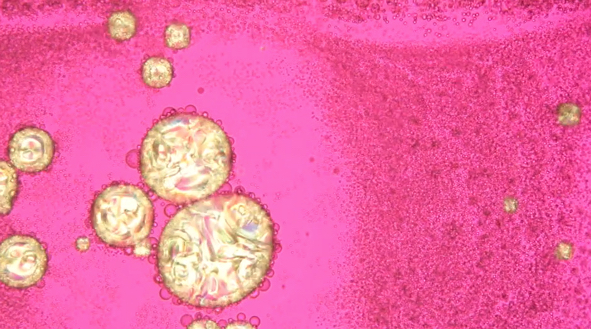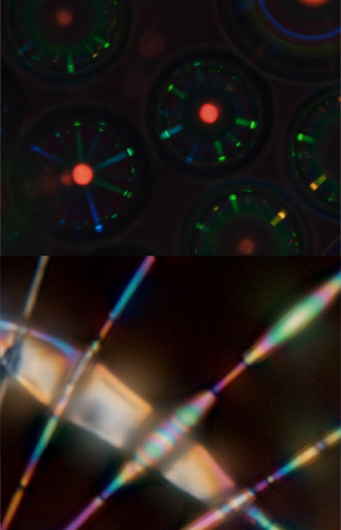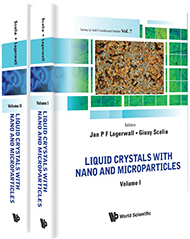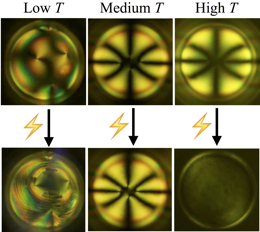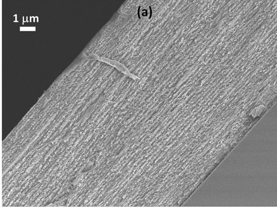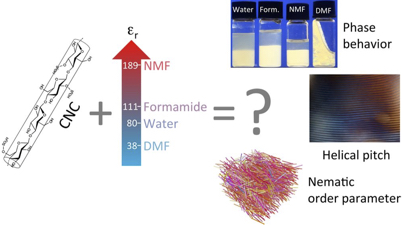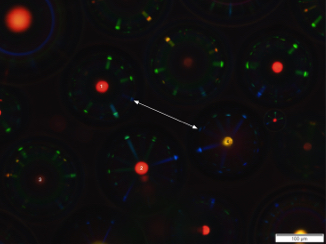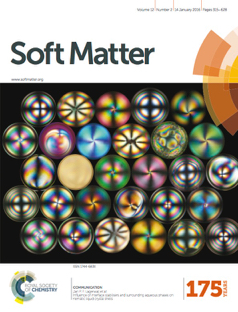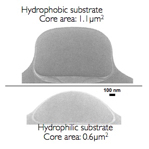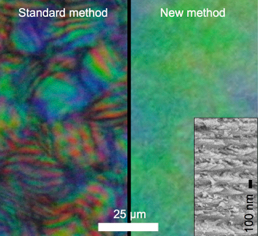New Publications and New Horizons
- We recently have had several publications go online: one as a collaboration between David Walba's and Apala Majumdar's group (with group alumni Anjali and Mitch) in Soft Matter; one with Danièle Waldmann-Diederich's group at TU Darmstadt in Structural Health Monitoring; and one in Physical Review E with Apala Majumdar's group as well on the dynamics of liquid crystal shells.
- In collaboration with Eugene Terentjev of the University of Cambridge and Maria Helena Godinho of the Universidade Nova de Lisboa, Jan recently was awarded an ERC Synergy grant for their proposal ALCEMIST on making more sustainable liquid crystal elastomers from cellulose. This is a big project that we're looking forward to, and more details on this will come in the new year. (This also means we'll probably be posting positions soon!)
- As group members prepare to leave, we also will be passing the mantle of certain roles onto other people, and we now have a new website coordinator! Larry Honaker, our recently rejoined postdoc, will be handling website content and management for the foreseeable future; this also means that the website will soon be overhauled with a new version to hopefully launch by the end of the year.
\LWH\

New publiction
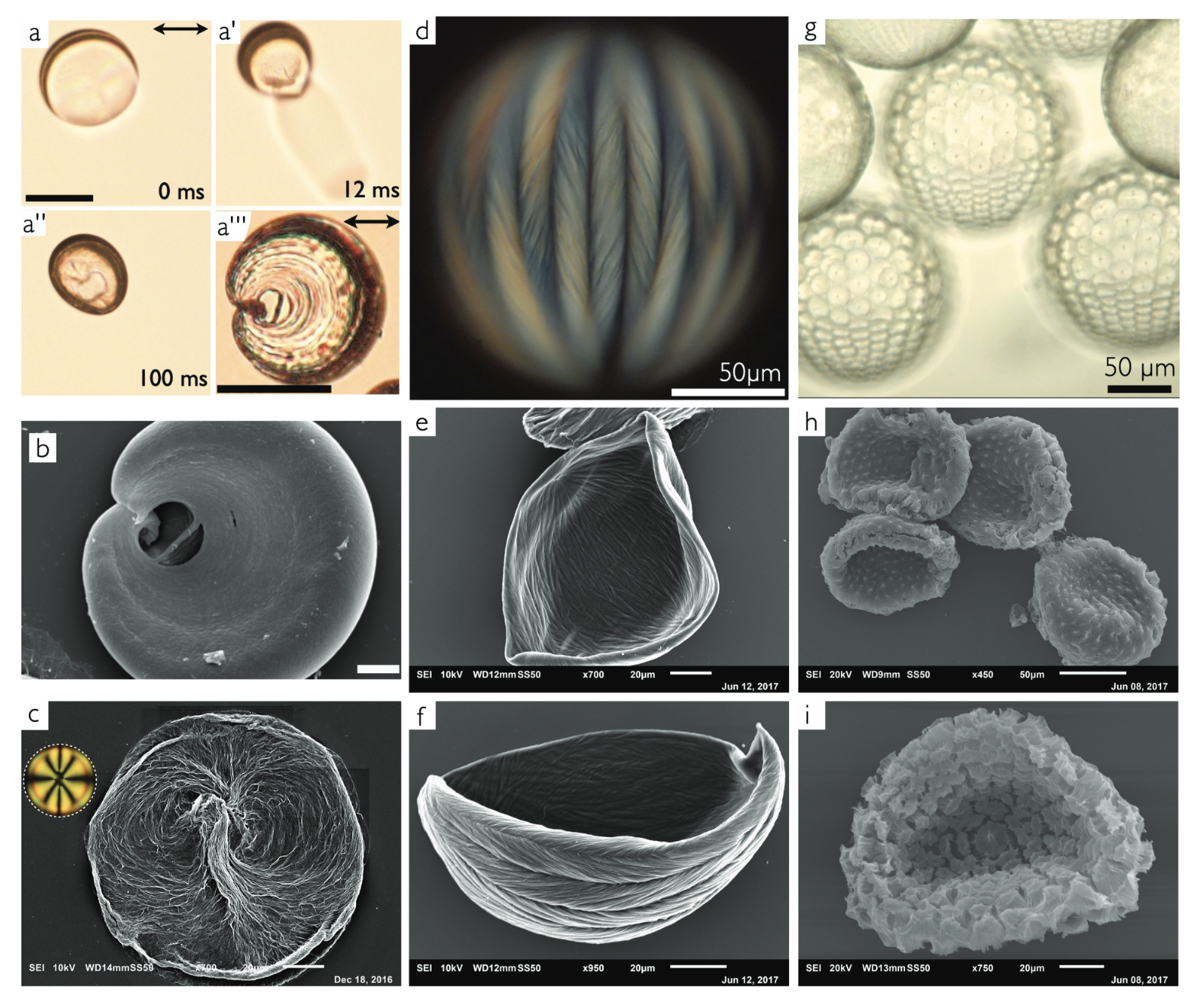
\XM
New Publication
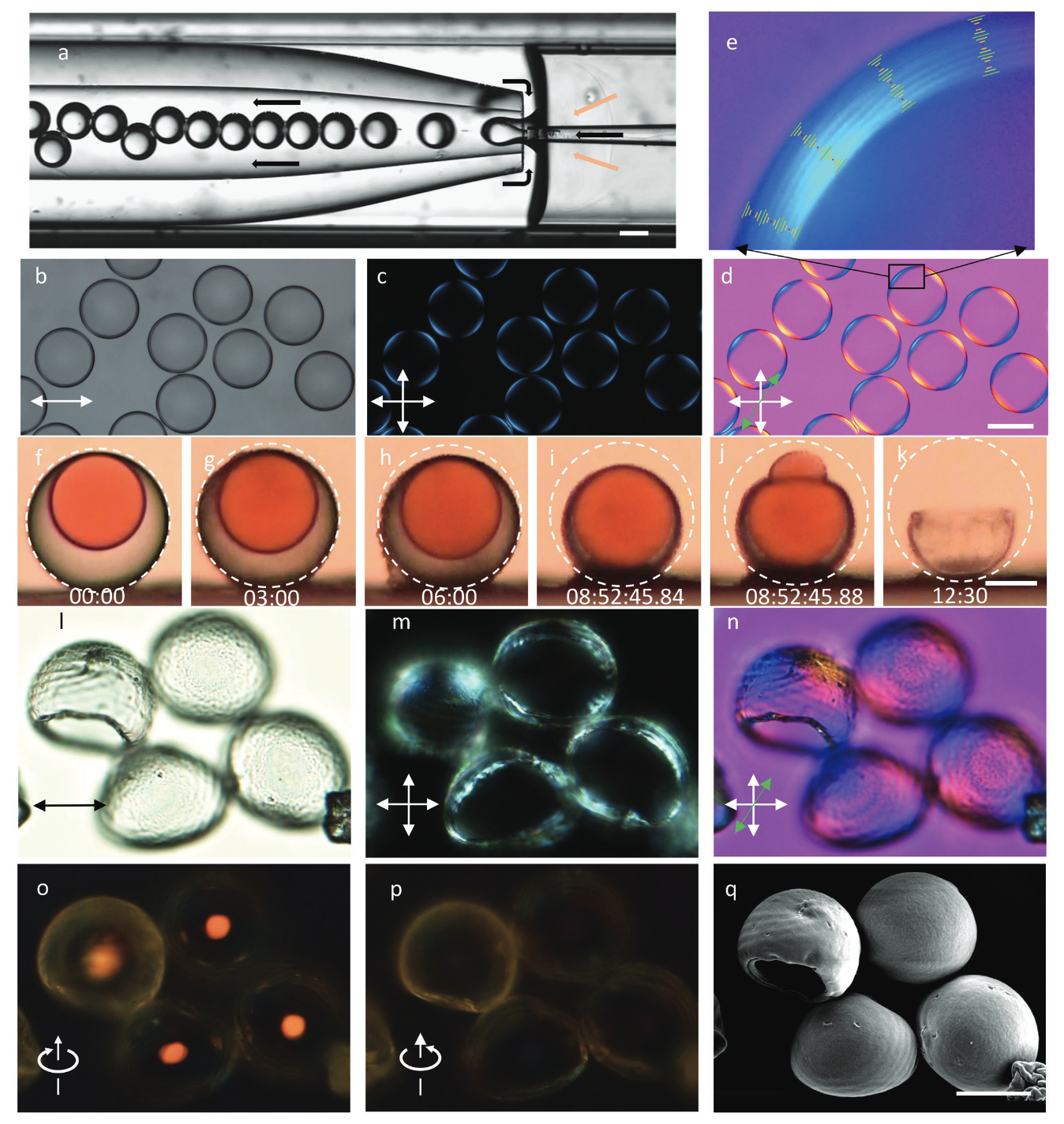
\XM
New Publication
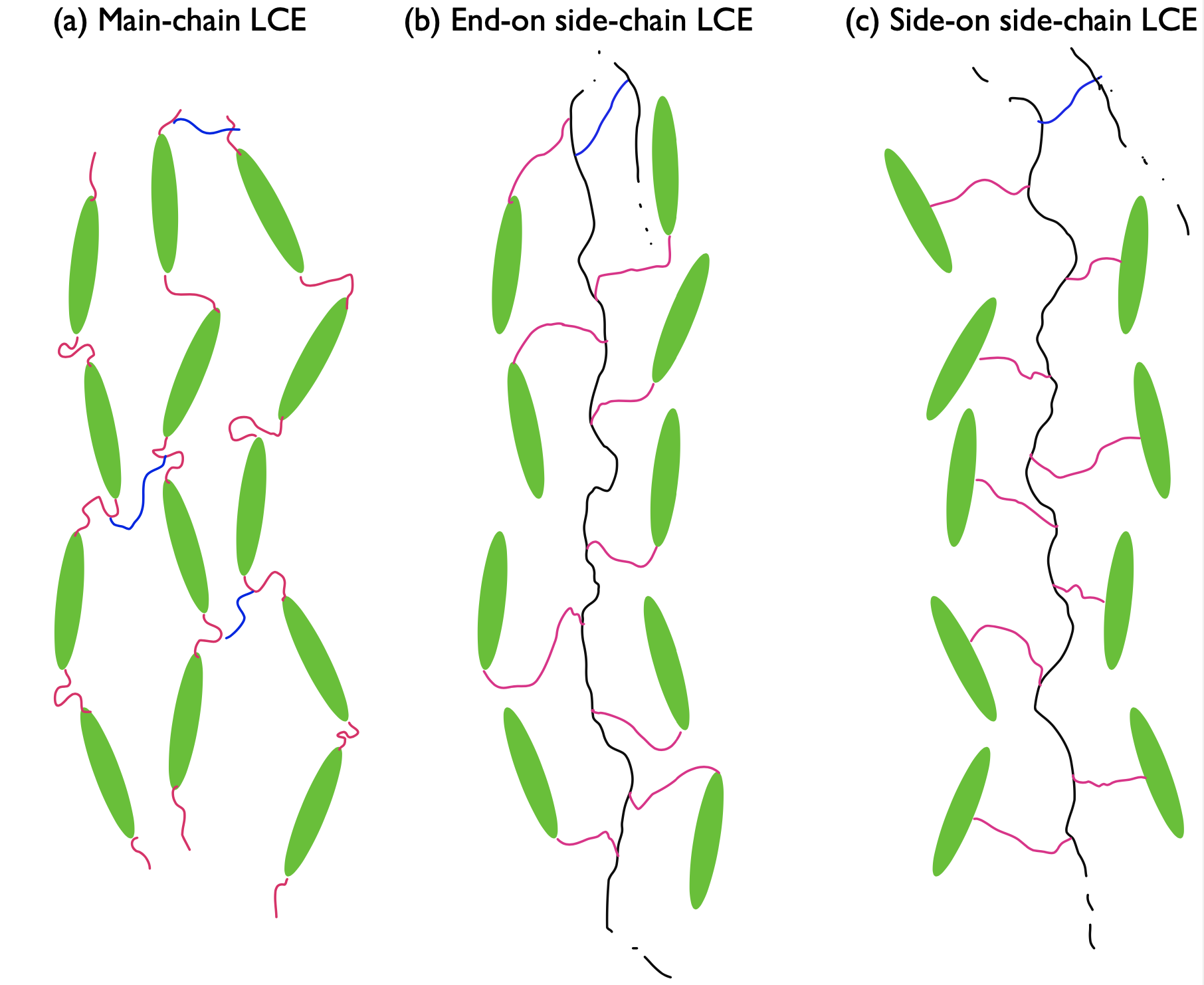
\XM
New Publication
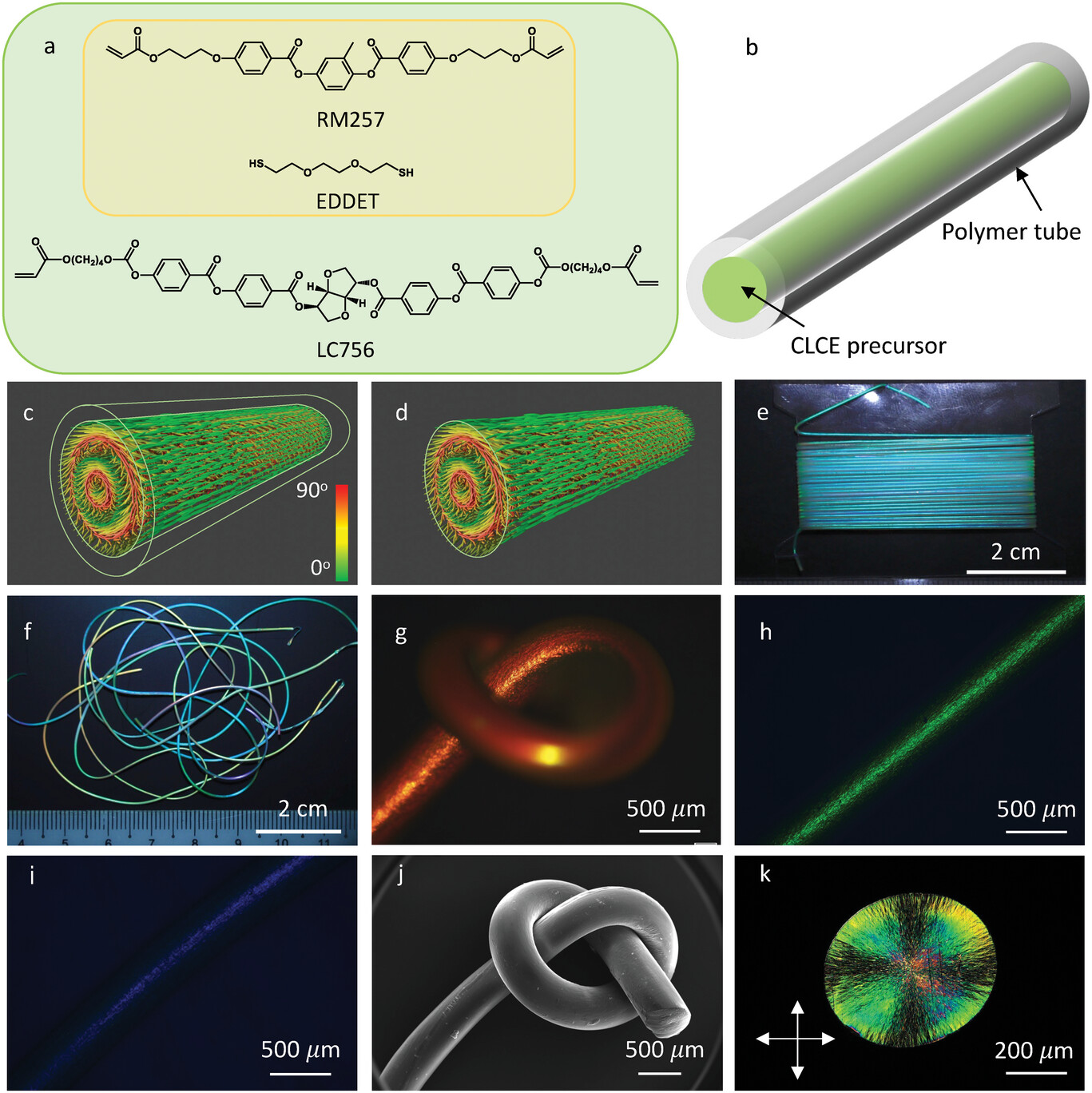
\XM
New Publication
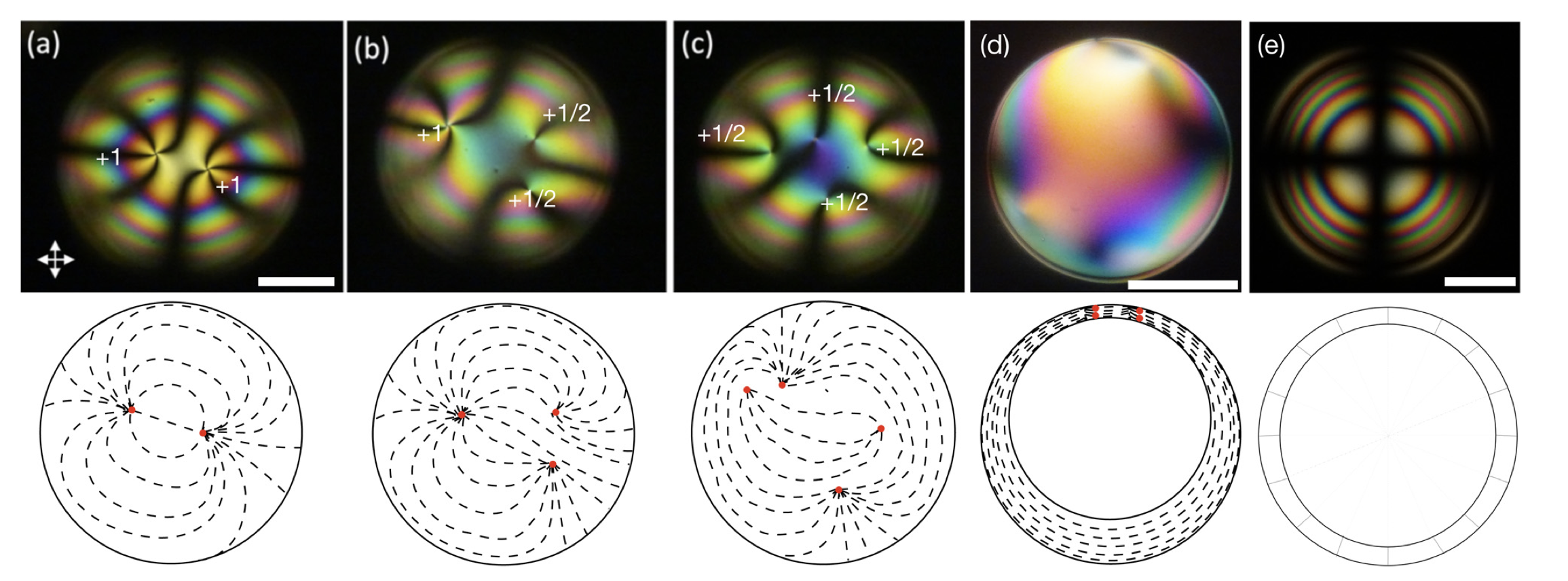
\ XM
New Publication

\XM
New Publication
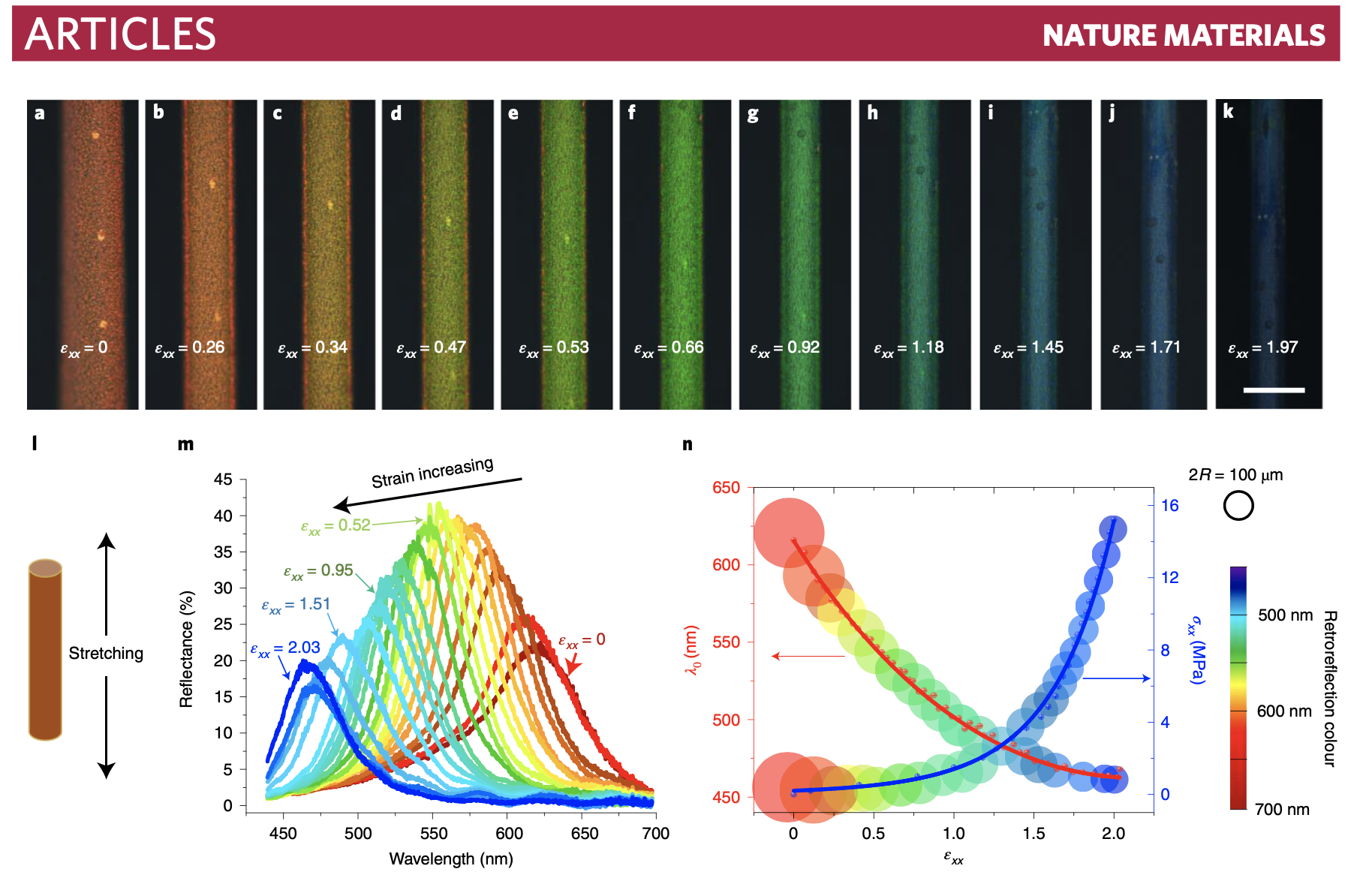
\XM
New article in Crystals!
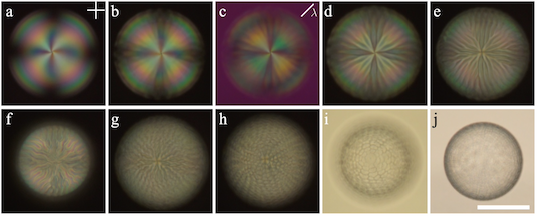
\XM
New article in Crystals!
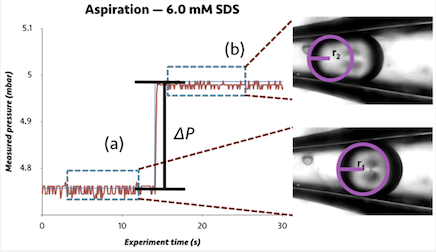
\AS
New publication!

\AS
Congratulations Camila!
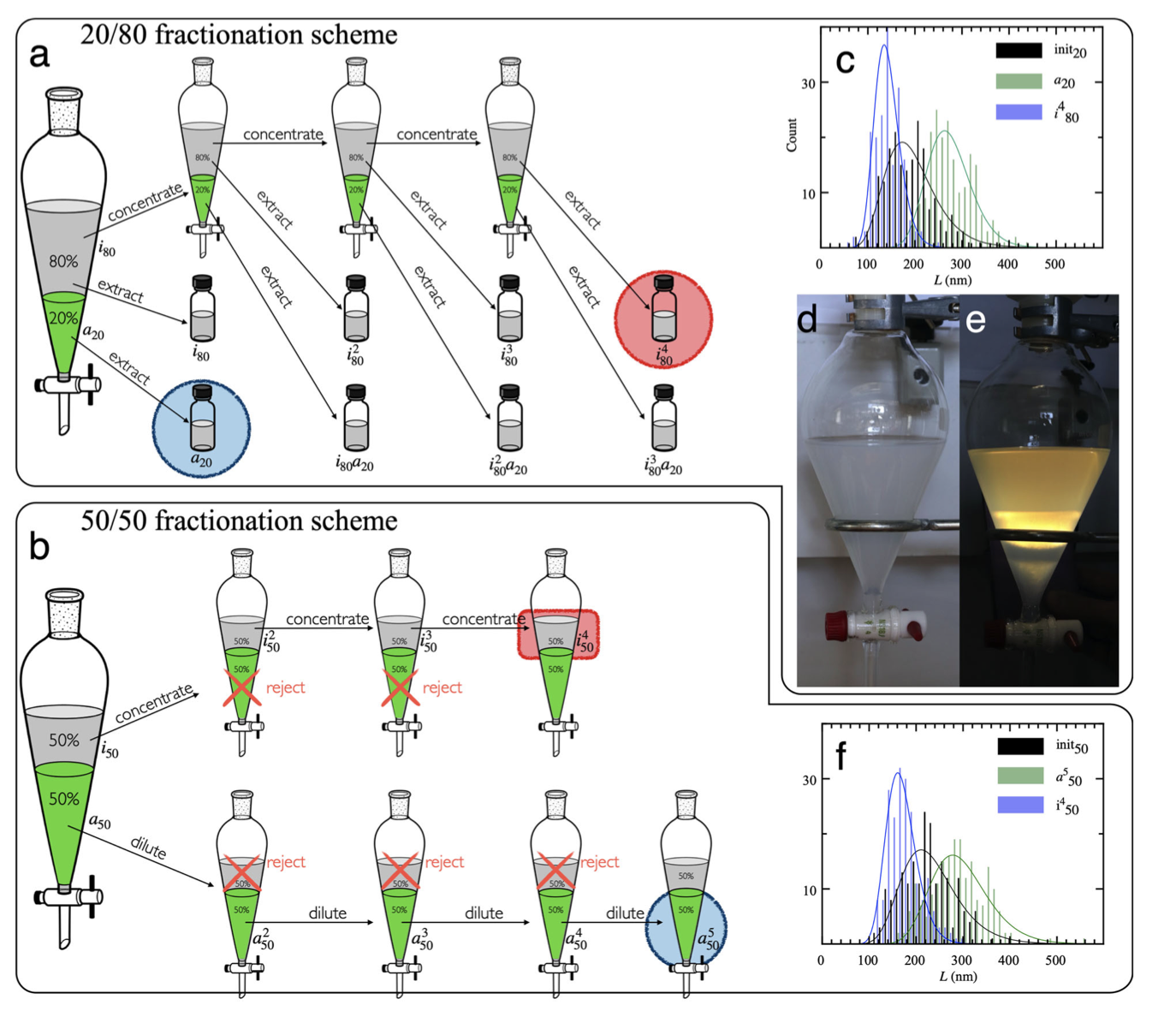
\AS
Congratulations to Manos!
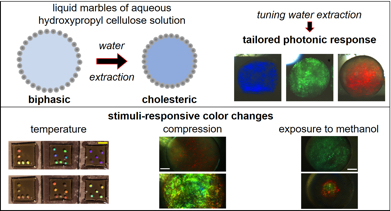
Congratulations to Larry!
In this article, they present the wet spinning of core–sheath liquid crystal-filled elastomer fibers using a microfluidic spinneret adapted from the normal techniques they use to produce shells and droplets. In particular, when we spin fibers containing a cholesteric liquid crystal, the result showing brilliant reflected colors as a result of the liquid crystal alignment within the fiber core. These fibers can be highly stretchable and show color changes upon heating and cooling.
You can access the article here.
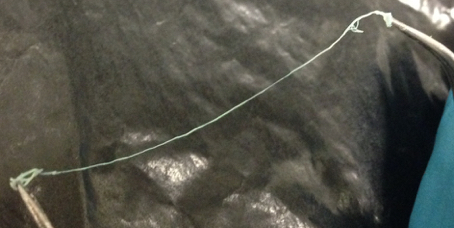
\AS
New Study on 5CB-Ethanol Phase Separation in Soft Matter + Cover!
"Isotropic-Isotropic phase separation and spinodal decomposition in liquid crystal-solvent mixtures" experimentally & theoretically reveals evidence of coexisting isotropic phases in simple mixtures of ethanol, 5CB, and water. Even though the nematic LC 5CB is arguably the most studied commercial liquid crystal worldwide, for the first time this study highlights experimental evidence of spinodal decomposition and nucleation and growth occuring between two isotropic phases and a single nematic phase between this common compound and equally common solvents.
(Click the image below to visit the article:
All supplementary info is open access!)
\AS\
Congratulations to Rao and Jan on the new publication in science advances!
Click here for the link.
\AS
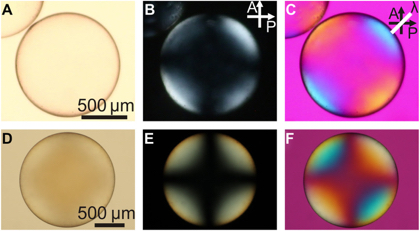
New Paper in Adv. Funct. Materials!
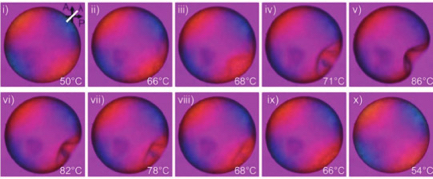
(Click the image above to read the article online, it is Open-Access)
Congratulations to Rao & Jan on the new publication in Advanced Functional Materials: “Micrometer‐Scale Porous Buckling Shell Actuators Based on Liquid Crystal Networks”!
After collaborating with Dirk Jan last fall on LCE shells (pic below!) , the study describing the actuation in the porous network + a curious discovery of negative birefringence is finally out ![]() & open access.
& open access.
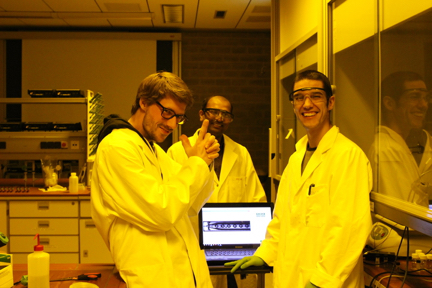
/CGR/
New Paper in Adv. Materials
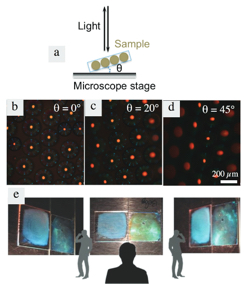
(Click the image above to read the article online, it is Open-Access)
Congratulations to Matt & Jan on the new publication in Advanced Materials: “Cholesteric Liquid Crystal Shells as Enabling Material for Information‐Rich Design and Architecture”!
Matt is a long time collaborator of Jan's since his time as a professor at SNU in South Korea. Some of us in the group got the chance to meet him, but eventually we'll all see each other again in a few days when Matt stops by our lab. Originally an architect by training, Matt worked on (and is probably still working on) many interdisciplinary projects involving robotics, and functional architecture design. He is currently a professor at the New Jersey Institute of Technology.
In this new article Matt, Jan and a few other collaborators at the SNT (Security, Reliability and Trust) Centre in Luxembourg discuss the possibilities of using cholesteric LC shells as sources for information technology in various architecture, drone, and robotics concepts and applications.
/CGR/
New Paper in Nature Asia
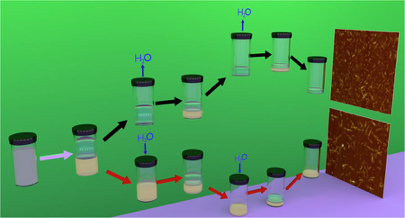
(Click the image above to read the article online, it is Open-Access)
Congratulations to Camila, Christina & Jan on the publication in Nature Asia Materials: "Fractionation of cellulose nanocrystals: enhancing liquid crystal ordering without promoting gelation" !
In a successful collaboration with Prof. Roland Sanctuary's group here at the physics & materials science research unit, this latest research on CNCs (cellulose nano crystals) describes in detail how controlling the fractionation of CNCs according to length can help in preventing the onset of gelation in solutions. The experimental results are discussed against what is already known regarding the aggregation of colloids based on the presence of counterions, and what still needs to be established in the field.
According to the authors: "Our results shine new light on the competition between liquid crystal formation and gelation in nanoparticle suspensions and provide a path for enhanced control of CNC self-organization for applications in photonic crystal paper or advanced composites."
/CGR/
New Paper in Materials by MDPI Journals
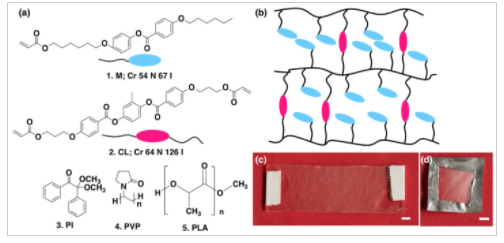
(Click the graphical abstract above to read the article online, it is Open-Access)
Congratulations to Anshul & Jan on the publication in Materials: “Electrospun Composite Liquid Crystal Elastomer Fibers”!
This is the first study to date that shows and analyzes the irreversible actuation of photo-crosslinkable reactive mesogens single axially electrospun with a carrier polymer, to create liquid crystal elastomer (LCE) fibers. Don't forget to check out the supplementary info for more details!
/CGR/
New Paper in J. of Molecular Liquids
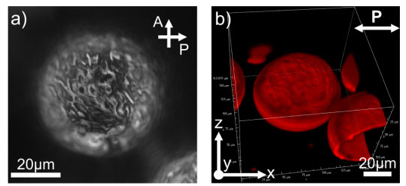
(Click the figure image above to access the article online, please email Jan if you cannot download the pdf file)
Congratulations to JungHyun & Rao on the publication in the Journal of Molecular Liquids titled: “Sub-second dynamic phototuning of alignment in azodendrimer-doped nematic liquid crystal shells”!
For the 1st time(!!), a study documents the photoswitching of azodendrimer in liquid crystal shells produced by microfluidics. Ultimately, our group members & colleagues find that phase separation may occur in shells when the dendrimer is in the trans ground state, and that photo switching turns such shells uniform - further indicating that the cis state is better soluble in the LC.
Hooray for the good start to the 2018 year ![]()
(Fyi - Also, I think this paper is the 1st to show results obtained from our new confocal microscope as well…so HD, so cool)
/CGR/
New Langmuir Paper Released Online
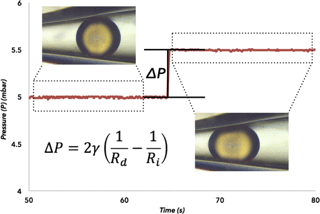
(Click the graphical abstract image above to access the article online, please email either Jan or Rao if you cannot download the pdf file)
Congratulations to Larry & Rao on the publication in Langmuir titled: “Microfluidic Tensiometry Technique for the Characterization of the Interfacial Tension between Immiscible Liquids”!
This is Larry's 1st paper in our group (!) and also Rao's 1st time serving as last author on a paper (!)
In this study, Larry and Rao borrow inspiration from the biologists and use the novel technique of micropipette aspiration (commonly used to measure the viscoelastic properties of living cells) to measure the interfacial tension of 5CB, water, and surfactants with a high degree of accuracy (from the sub-millinewton per meter to several hundred millinewton per meter range) solely from experimental observations of the droplet deformation. This is highly unique as information on the liquid density is not needed to find the interfacial tension.
/CGR/
JPCM Review on LCs in Shells, Droplets & Fibers Makes IOP's 2017 Highlights!
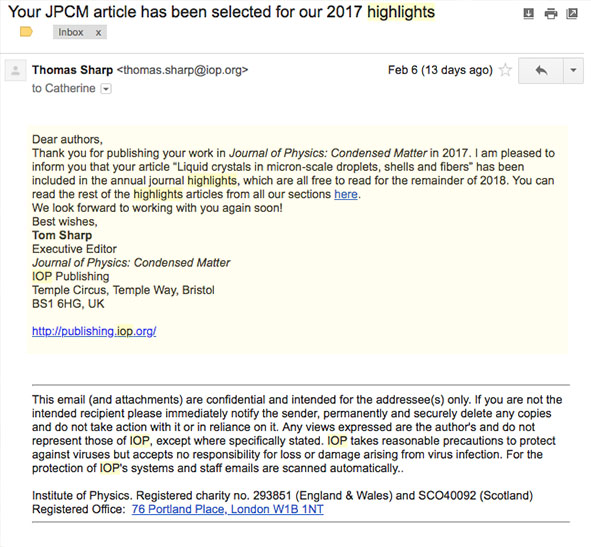
Our review on LCs in Droplets, Shells & Fibers got selected for the 2017 highlights list by IOP Publishing!! Yes mega Congrats to our team!!
Thanks to everyone who also read &/or downloaded our article.
We put a lot of effort into trying to make a review as comprehensive, and as accurate, for those outside and in our fields as possible.
If you want to check the highlights click here (Category is: Soft matter, biophysics and liquids) - http://iopscience.iop.org/journal/0953-8984/page/Highlights-2017
/CGR/
New review article on liquid crystals in droplets, shells, and fibers released
(<— Click to check it out)
With careful and succinct discussions of various topics ranging from the characterization of typical liquid crystalline (LC) phases, to the complexities surrounding LC defects under confinement, we're sure that this review will soon become known as one of the "go-to" manuals for both liquid crystal physicists, and chemists; those just beginning in the field, and veteran researchers alike.
In considering the long length of the article, we've carefully sub-sectioned the important works, advancements, and ongoing research contributing to how liquid crystals behave in each of the major curved configurations (i.e. droplets, shells, and fibers). This was done so that anyone interested in knowing more about a particular topic can easily find the right section without having to start reading from the very beginning. At the same time, we include a number of cross-references serving as reminders for the reader to review certain previously described concepts when necessary.
Finally, at the end of each configuration topic we conclude the sections by highlighting the latest research trends which the LC field has shown interest in — for LCs in droplets and shells, it ends with a discussion of active and motile LC systems (inspired by the flocking mechanism in many biological systems) and liquid crystal elastomer (LCE) actuating shells. For LCs in polymer fiber confinement, the section ends with a discussion on textile based gas responsive visual aids, and comparisons to current gas sensing systems.
Here's a brief outline of every section & contents within:
1. Intro
2. The liquid crystalline states of matter [thermotropic nematics & smectics, order parameter, clarification of terminology for LC orientations, LC deformations & elasticity, cholesterics, LC elastomers (LCEs)]
3. Liquid crystal shells and droplets [microfluidics - what it is, how it works for making LC shells & droplets; issues surrounding interface stabilization & LC alignment control within; topological defects for nematic, cholesteric, smectic droplets and shells; droplet & shell LCE actuatiors; active LC droplets & shells]
4. Core-sheath fibers with encapsulated LC [known behaviors of nematics, smectics, cholesterics in silica cylindrical capillaries; electrospinning basics for inserting LCs into polymer cylindrical (and non-cylindrical) fibers; issues surrounding solvent, polymer concentration and molecular weight choices with particular LCs; various LC molar mass types in polymer fibers; LCE fibers and gas sensing applications]
5. Outlook
/CGR/
New book on Liquid Crystals with Nano and Micro Inclusions
Volume 1:
1. Introduction (G Scalia and J P F Lagerwall)
I. Fundamentals:
2. A Phenomenological Introduction to Liquid Crystals and Colloids (J P F Lagerwall)
3. Nanoparticle Dispersions: A Colloid and Polymer Solution Perspective (P van der Schoot)
4. Nematic Liquid Crystals Doped with Nanoparticles: Phase Behavior and Dielectric Properties (M A Osipov and M V Gorkunov)
II: Methods for Studying Liquid Crystals and Their Inclusions:
5. Conventional and Nonlinear Optical Microscopy of Liquid Crystal Colloids (T Lee and I I Smalyukh)
6. X-Ray Scattering (G Ungar, Z Chen and X Zeng)
7. Raman Spectroscopy (H F Gleeson)
8. Manipulation of Inclusions with Optical Tweezers (M Skarabot)
9. Atomic Force Microscopy on Liquid Crystals (C Bahr and B Schulz)
III. Micron Scale Inclusions in Liquid Crystals:
10. Solid Microparticles in Nematic Liquid Crystals (Igor Muševič)
11. Inclusions in Freely Suspended Smectic Films (R Stannarius and K Harth)
12. Liquid Crystal-Enabled Electrophoresis and Electro-Osmosis (O D Lavrentovich)
Volume 2:
IV. Nanoparticles in Liquid Crystals:
13. Nanoparticles in Discotic Liquid Crystals (S Kumar)
14. Metallic and Semiconducting Nanoparticles in LCs (A Sharma, M Urbanski, T Moria, H-S Kitzerow and T Hegmann)
15. Inorganic Nanotubes and Nanorods in Liquid Crystals (I Drevenšek-Olenik)
16. Liquid Crystals from Mesogens Containing Gold Nanoparticles (W Lewandowski and E Gorecka)
17. Carbon Nanotubes in Thermotropic Low Molar Mass Liquid Crystals (S Schymura, J Park, I Dierking and G Scalia)
18. Carbon Nanotubes Dispersed in Liquid Crystal Elastomers (Y Yang and Y Ji)
19. Ferromagnetic and Ferroelectric Nanoparticles in Liquid Crystals (Y Reznikov, A Glushchenko and Y Garbovskiy)
20. Nanoparticle Guests in Lyotropic Liquid Crystals (S Dölle, J H Park, S Schymura, Hyeran Jo, G Scalia and J P F Lagerwall)
21. Control of Nanoparticle Self-Assemblies Using Distorted Liquid Crystals (E Lacaze and D Coursault)
22. Nanoparticles and Networks Created Within Liquid Crystals (S-W Kang and S Kundu)
Liquid Crystals Formed by Nanoparticle Suspensions:
23. Nematic Phase Formation in Suspensions of Carbon Nanotubes (C Zakri and Ph Poulin)
24. Nematic Phase Formation in Suspensions of Graphene Oxide (N Fresneau and S Campidelli)
25. Electro-Optical Switching of Liquid Crystals of Graphene Oxide (J Song)
26. Liquid Crystalline Phases in Suspensions of Pigments in Non-Polar Solvent (S Klein, R Richardson and A Eremin)
27. Cholesteric Liquid Crystal Formation in Suspensions of Cellulose Nanocrystals (C Honorato-Rios, J Bruckner, C Schütz, S Wagner, Z Tosheva, L Bergström and J P F Lagerwall)
New paper on polymer-stablized liquid crystal shells in Advanced Materials
Here you can find the full paper (don't forget to check out the rich supporting information, including many spectactular movies), and here is a layman's abstract for the paper.
New paper on quantitative optical characterization of CNC films
Read the article on the Cellulose website.
New paper in Langmuir on CNC dispersion in non-aqueous polar solvents
If you have an institutional subscription to Langmuir, you can download the article here. If you do not, you can try the following link: http://pubsdc3.acs.org/articlesonrequest/AOR-uVuBGBqpFzkXHmtihG36 . The first 50 to try this link can download the article for free, regardless of subscription.
We regret that the published Acknowledgments section unfortunately did not mention that Rick Dannert is a member of the Laboratory for the Physics of Advanced Materials of the University of Luxembourg and that this group kindly made their equipment (AFM, rheometer and refractometer) available for some of the experiments described in the paper. We deeply apologize for having forgotten this information in the published paper. Here we would like to express our deep gratitude for the support from the Laboratory for the Physics of Advanced Materials.
New paper on gas sensing with liquid crystal core microfibers
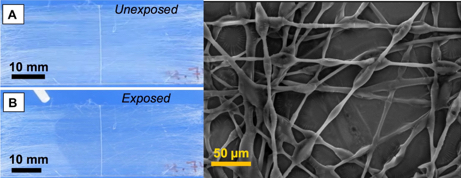
Yong's cholesteric microshells study published in Scientific Reports
Congrats to Yong on the publication of his cholesteric microshells study in the journal Scientific Reports (Nature Publishing Group)! Together with JungHyun he succeeded in preparing shells from different cholesteric liquid crystal mixtures, giving selective reflection in different color ranges. He has developed a new method to rapidly remove defects by annealing through osmosis, and then he polymerizes a fraction of the mixture that is sufficient to make the shells robust under considerable mechanical deformation. With the help of our collaborators Romano Rupp (University of Vienna) and Irena Drevensek-Olenik (University of Ljubljana) we analyze the complex optics of the photonic cross communication between the shells, finding that the communication is active even between shells with different reflection colors, opening up new communication channels (picture). Finally, our collaborator at the Interdisciplinary Center for Security and Trust (SnT) at the University of Luxembourg, Dr. Gabriele Lenzini, provides a thorough and critical discussion on how the patterns generated by the shells may be used in secure authentication. The paper is Open Access, so please download and read it at http://www.nature.com/articles/srep26840 (and make sure to check the nice movies in the Supporting Information!).
Camila's article on cholesteric-isotropic phase transitions in cellulose nanocrystal suspensions published
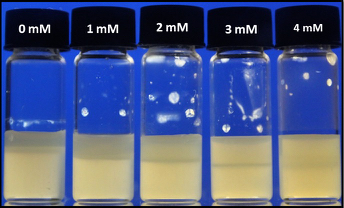
Martin's article on the effect of gold nanoparticle doping on the dielectric properties of nematics on-line
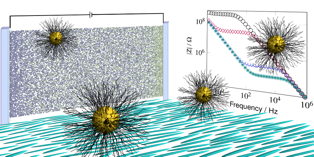
JungHyun's article makes the cover page on Soft Matter
Paper on the complex influence of the surrounding phases on liquid crystal shells accepted
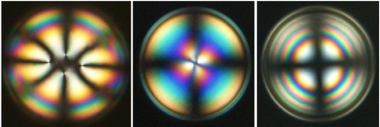
New article on self-assembled nanowires from discotic liquid crystals

Paper on dual-core liquid crystal electrospinning
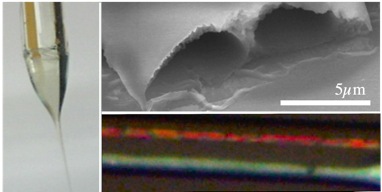
New article on cellulose nanocrystals
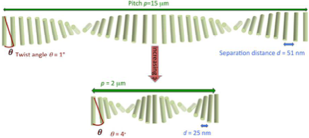 A new result from our fruitful collaboration with Stockholm University on cellulose nanocrystal suspensions appeared as an ASAP article in Langmuir today. It contains the best measurements of helix pitch in equilibrium cholesteric suspensions to date, based on a combination of x-ray and optical diffraction measurements. You can find the paper here.
A new result from our fruitful collaboration with Stockholm University on cellulose nanocrystal suspensions appeared as an ASAP article in Langmuir today. It contains the best measurements of helix pitch in equilibrium cholesteric suspensions to date, based on a combination of x-ray and optical diffraction measurements. You can find the paper here.New article on electrospinning in ACS Applied Materials & Interfaces
New ChemPhysChem paper on cholesteric liquid crystals of cellulose nanocrystals (CNC)
Note: if you want to learn more about liquid crystals from CNC, please check out our recent review article (open access!) in NPG Asia Materials.
New paper in Advanced Optical Materials
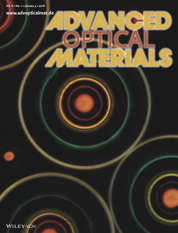
**Update (12.01.17 - POM images fromYong's paper are selected for the inside cover of Advanced Optical Materials! Click the cover above to freely access the article online)
Congratulations to Yong on the publication in Adv. Opt. Mater. titled: “Through the Spherical Looking-Glass: Asymmetry Enables Multicolored Internal Reflection in Cholesteric Liquid Crystal Shells”!
Spheres of cholesteric liquid crystal generate dynamic patterns due to selective reflection from a helical structure subject to continuously curved boundaries. In this paper the patterns are investigated exclusively.
Click here for an extended layman's abstract summary written by Jan & some info about the curious Alice in Wonderland-like title ![]()
/CGR/
New paper on organic functionalized nanoparticles in nematic LCs
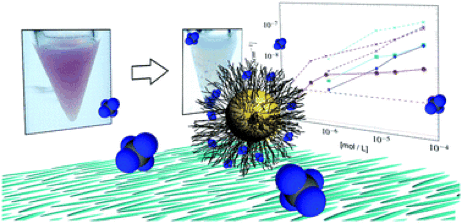
(click the above image to access the article online)
Congratulations to Martin on the publication in J. Mater. Chem. C of his dielectric spectroscopy study “Why organically functionalized nanoparticles increase the electrical conductivity of nematic liquid crystal dispersions”!
This paper gives a first systematic study of how and why nanoparticle doping raises the electrical conductivity of thermotropic liquid crystals like the commonly studied 5CB. By a careful analysis of the dielectric spectra, he shows that the hydrodynamic radius of the ionic charge carrier is much smaller than the nanoparticles, ruling out the particles themselves as the source of conductivity. The ligand molecules are also not the reason, as is demonstrated by strong sonication of the dispersions, such that the ligands detached from the nanoparticles. While this causes nanoparticle aggregation and the loss of suspension stability, the effect on conductivity is negligible. The ligand shell is, however, partially responsible, because the ions giving rise to the conductivity increase are most likely remnants from the ligand-functionalized nanoparticle synthesis process. We propose that these ions are brought in with the ligand shell when the particles are dispersed in the 5CB. Interestingly, the ions appear not to be released in an isotropic and aromatic solvent such as toluene, which is often the host for commercial gold nanoparticle suspensions, but 5CB is an ideal host for their dissolution. The aliphatic ligand shell has a higher compatibility with 5CB than with toluene, thanks to the alkyl tail of 5CB, and at the same time the high polarity of the 5CB (due to the cyano group) allows better ion dissolution than in regular hexane. Finally, the nematic order of the 5CB solvent provides an anisotropic environment in which the ligands are stretched out preferentially along the director, making release of ligand-bound ions to the solvent more likely.
/JL/
New paper on the details of cholesteric LC shell reflection patterns
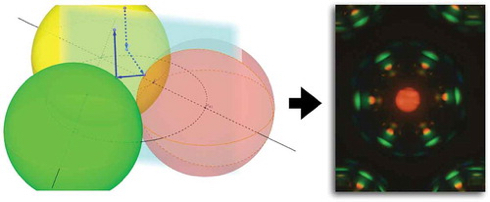
(click the above image to access the article online)
Our fruitful collaboration with Irena Drevensek-Olenik (Ljubljana) and Romano Rupp (Vienna) has resulted in a new article published in Liquid Crystals (special “John Goodby Festschrift” issue). It's also open access!
The paper is entitled “Elucidating the fine details of cholesteric liquid crystal shell reflection patterns” and it combines optical analysis and computer simulations with experimental investigations in the polarizing microscope, allowing a much advanced understanding of the intricate communication patterns arising in collections of short-pitch cholesteric liquid crystal shells, produced using microfluidic techniques. We can now give quantitative information on how the size of the main reflection spot scales with shell size and we explain a number of reflection spots that have previously been ignored. We show that one must consider a certain variation of incidence and reflection angles as well as reflection within the liquid crystal shell in order to explain the patterns. A particularly interesting result is the demonstration and explanation of the first reflection spots that involve communication between three shells: light incident close to the perimeter of one shell can be reflected to an adjacent shell at such an angle that the reflected beam hits a third shell, which then in turn reflects it back to the observer.
/JL/







